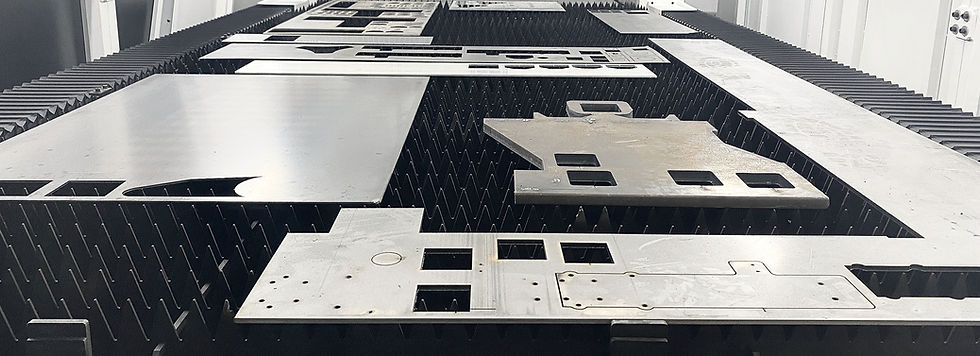The Future of Manufacturing: 5 Trends Shaping Metal Fabrication
- Laser Machines
- Sep 16
- 3 min read
Updated: Sep 18
Metal fabrication has always adapted to new tools and processes, but the changes happening today look a little different. From smarter machines to more efficient ways of working, the industry is gradually evolving. While not every trend will be right for every workshop, keeping an eye on where things are heading can help businesses stay competitive and make decisions at the right time.

Here are Five Key Trends Shaping the Future of Metal Fabrication:
1. Automation and Robotics
Automation is becoming more accessible, even for smaller fabrication shops. Beyond large-scale robotic cells, there are now compact, flexible options such as collaborative robots (or “cobots”) that can assist with tasks like material handling, loading and unloading, or repetitive finishing work.
The advantage isn’t just speed - automation can help reduce strain on staff and keep production more consistent. For many businesses, automation starts small and grows over time, making it something to keep in mind as equipment is upgraded.
2. Connected Machines and Smarter Software
The move towards Industry 4.0 means more machines can now connect to software and share production data in real time. For example, a laser cutter linked to nesting software can improve material use and reduce waste, while some systems also provide live feedback on machine status and job progress.
For workshops used to working with manual setups, this may sound like a big shift. In reality, it often comes step by step - starting with simple software integrations that make quoting, planning, or cutting more accurate and efficient.
3. Hybrid and Advanced Manufacturing Methods
While traditional processes like cutting, bending and welding remain central to fabrication, hybrid methods are emerging. These combine established subtractive processes with additive manufacturing (3D printing with metal).
Although not yet widespread in everyday fabrication, these technologies are worth keeping an eye on. They’re finding use in specialised areas such as complex part repairs or producing lighter components with fewer joins.
4. Sustainability and Efficiency
Rising energy costs and a stronger focus on sustainability are influencing decisions across manufacturing. In metal fabrication, this includes choosing more energy-efficient machines, monitoring gas usage more carefully, and recycling scrap material.
These practices not only help with environmental targets but can also reduce operating costs in the long term. Even small steps, like fine-tuning cutting parameters or reviewing material handling processes, can make a noticeable difference.
5. Working with New Materials and Finishes
The range of metals being used is expanding, with stronger alloys, coated materials, and lightweight options becoming more common. These materials sometimes require different cutting parameters or finishing techniques.
At the same time, customers are placing greater importance on the final look of parts. This is making processes like deburring, sanding and polishing an essential part of the workflow rather than just a finishing touch.
Final Thoughts
The trends shaping metal fabrication don’t necessarily mean replacing everything that already works. Instead, they highlight areas where the industry is gradually moving and where opportunities may arise in the years ahead. For some businesses, the best approach will be to keep watch, while others may choose to take small steps towards new technologies as the benefits become clear.
At Laser Machines, we work with manufacturers across Australia to provide solutions that suit different ways of working - from traditional fabrication to more advanced systems. Whether it’s laser cutting machines, press brakes, deburring equipment or support systems, we can help find the right fit for your business.